Understanding Microinverter Technology: A Paradigm Shift in Solar PV
The renewable energy landscape has witnessed significant transformations over the past decade, with solar photovoltaic (PV) technology leading the charge. Central to this evolution is the advancement of power electronics, particularly the advent and maturation of the Microinverter. Unlike traditional string inverters, which manage large arrays of solar panels, a Microinverter operates at the individual solar panel level, converting the direct current (DC) generated by each panel into usable alternating current (AC) directly at the source. This fundamental architectural difference brings forth a myriad of advantages that address common limitations of conventional solar installations, such as shading losses, complex wiring, and challenges in system monitoring and fault detection. The global energy transition imperative, driven by environmental concerns and the pursuit of energy independence, continues to accelerate the adoption of solar PV. In this dynamic environment, the Microinverter stands out as a critical component, enabling higher system efficiency, enhanced safety, and greater flexibility in design and expansion for both residential and commercial applications. Its decentralized architecture provides a robust solution for optimizing energy harvest from every single panel, even in sub-optimal conditions. This makes it an increasingly preferred choice for discerning customers and installers looking for reliability and performance.
Current industry trends underscore a growing demand for distributed energy resources and intelligent grid integration, areas where Microinverter technology excels. The push towards smart homes and buildings, coupled with the increasing penetration of electric vehicles, necessitates more resilient and adaptable energy systems. Microinverters, with their inherent modularity and advanced communication capabilities, are perfectly positioned to meet these evolving requirements. They facilitate precise monitoring of individual panel performance, offering granular data that empowers users to identify and rectify issues swiftly, thereby minimizing downtime and maximizing energy yield. Furthermore, the emphasis on safety in electrical installations is paramount, and Microinverters significantly mitigate risks by eliminating high-voltage DC wiring found in traditional string inverter systems. This inherent safety feature is a key differentiator, making installations safer for both installers and occupants. The continuous innovation in power electronics, coupled with economies of scale, is driving down the cost of Microinverters, making them an increasingly viable and attractive option across various market segments. As the world moves towards a more sustainable and decentralized energy future, the role of the Microinverter will only become more pronounced, solidifying its position as a cornerstone technology in modern solar PV deployments. Its ability to simplify installation, improve system resilience, and enhance overall energy production translates directly into superior return on investment for businesses and homeowners alike, aligning perfectly with global sustainability objectives.
The Advanced Manufacturing Process of a High-Performance Microinverter
The fabrication of a state-of-the-art Microinverter is a sophisticated process that integrates cutting-edge electronics manufacturing techniques with rigorous quality control. Unlike the mention of casting or forging applicable to mechanical components, the production of a Microinverter heavily relies on precision assembly and intricate electrical engineering. The journey begins with the selection of premium-grade electronic components, including high-efficiency power semiconductors, advanced microcontrollers, robust capacitors, and durable inductors. These components are sourced from trusted, certified suppliers to ensure optimal performance and longevity under diverse operational conditions. The printed circuit board (PCB), the backbone of the Microinverter, is designed with meticulous attention to detail, optimizing for thermal management, signal integrity, and power density. The materials chosen for the PCB, such as high-Tg FR-4 laminates, are selected for their thermal stability and dielectric properties, crucial for the demanding environment of power electronics. This foundational step ensures that the subsequent assembly processes have a stable and reliable platform upon which to build. The design phase also incorporates stringent electromagnetic compatibility (EMC) considerations, preventing interference and ensuring seamless operation within a larger electrical system.
The manufacturing process proceeds with automated surface-mount technology (SMT) assembly, where tiny electronic components are precisely placed onto the PCBs. Modern SMT lines utilize high-speed pick-and-place machines capable of handling thousands of components per hour with micron-level accuracy. This phase includes automated optical inspection (AOI) systems that scan each assembled board for component presence, correct placement, and solder joint quality, ensuring zero defects before proceeding to the next stage. Following SMT, through-hole components, such as larger capacitors or connectors, are typically integrated using selective soldering or wave soldering techniques, providing robust mechanical and electrical connections. A critical step is the comprehensive functional testing of the populated PCBs, where specialized test fixtures simulate various operating conditions to verify electrical parameters, communication protocols, and overall functionality. This in-circuit test (ICT) and functional test (FCT) phase employs advanced diagnostic tools to pinpoint any deviations from specifications, guaranteeing that only fully functional boards move forward. Environmental stress screening (ESS) may also be applied, subjecting boards to temperature cycling and vibration to expose latent defects, enhancing long-term reliability.
Once the electronic modules are verified, they are integrated into a robust, weatherproof enclosure. This enclosure is typically made from high-grade aluminum alloys or engineering plastics, chosen for their excellent thermal conductivity, corrosion resistance, and UV stability. For outdoor use, the enclosure design must meet stringent ingress protection (IP) ratings, commonly IP67 or IP68, ensuring complete protection against dust and water submersion, critical for the lifespan of an outdoor electronic device like a Microinverter. Potting or encapsulation using thermally conductive epoxy resins is often employed to protect internal components from moisture, dust, and vibration, further extending the product's lifespan and enhancing its durability in harsh environmental conditions. The final assembly involves securing all internal components, connecting power cables, and integrating communication modules. Each finished Microinverter undergoes a rigorous final quality control inspection, including a burn-in test, where it operates under load for an extended period to simulate real-world conditions and identify any potential early-life failures.
Testing and validation are paramount throughout the entire manufacturing cycle. Products are subjected to a battery of tests adhering to international standards such as ISO 9001 for quality management systems, ISO 14001 for environmental management, and specific product safety and performance standards like UL 1741, IEEE 1547, EN 50549, and VDE-AR-N 4105. These certifications are critical for market acceptance and demonstrate compliance with stringent electrical safety and grid interconnection requirements. The design lifespan for a high-quality Microinverter is typically 20-25 years, aligning with the expected lifespan of solar PV modules. This longevity is achieved through careful component selection, robust thermal management, and meticulous manufacturing processes. While the industries mentioned like petrochemical or metallurgy are not direct applications for Microinverters, their pervasive application lies within the distributed energy sector, including residential rooftop solar, commercial building installations, and specific industrial PV projects where granular control and enhanced safety are paramount. For instance, in commercial settings, the Microinverter offers significant advantages in energy harvesting on complex rooftops with varying shade patterns, leading to higher overall system yields. Their modular nature also facilitates easier system expansion and maintenance, reducing long-term operational costs and increasing energy independence. The energy-saving benefits are inherent in their ability to maximize the output of each panel, contributing significantly to a greener, more sustainable energy infrastructure.
Key Technical Parameters and Specifications of a Microinverter
Understanding the technical specifications of a Microinverter is crucial for optimizing solar PV system design and performance. These parameters define the operational capabilities, efficiency, and compatibility of the device with various solar modules and grid requirements. At the core, the Microinverter functions by performing Maximum Power Point Tracking (MPPT) at the individual panel level. This is a significant differentiator from string inverters. MPPT technology dynamically adjusts the electrical load presented to the solar panel to extract the maximum possible power under prevailing irradiance and temperature conditions. Unlike string inverters where a single MPPT often governs multiple panels, leading to "bottlenecking" if one panel is shaded, granular MPPT ensures that each panel operates at its optimal power point independently. This significantly enhances energy harvest, especially in installations prone to partial shading, soiling, or module mismatch. The input voltage range (DC) is critical, indicating the acceptable voltage window from the connected solar panel. A wider input voltage range offers greater flexibility in module selection and system design. For instance, a Microinverter might support DC input voltages from 16V to 60V, accommodating various module types, including those with higher power ratings and lower voltage characteristics like half-cut cell or bifacial modules.
The output power (AC) rating is another fundamental specification, indicating the maximum power the Microinverter can deliver to the grid. This is typically rated in Watts (W) or Volt-Amperes (VA). Common output power ratings for single-panel Microinverters range from 250W to over 800W, depending on whether it supports one, two, or even four modules (a quad Microinverter). The peak efficiency and weighted efficiency (e.g., California Energy Commission (CEC) efficiency or European (Euro) efficiency) are crucial metrics, demonstrating how effectively the Microinverter converts DC power to AC power. High efficiency, typically above 97.5% for peak and 97% for weighted, minimizes energy losses during conversion, maximizing the overall system yield. Power factor, often expressed as a value between 0 and 1, indicates how effectively the inverter uses the reactive power of the grid. A power factor close to 1 signifies efficient use of power. Advanced Microinverters often feature reactive power control, allowing them to support grid stability by providing or absorbing reactive power as needed, a feature increasingly mandated by grid operators for distributed generation systems.
Communication protocols are essential for monitoring and management. Most Microinverters utilize wireless communication technologies like Wi-Fi, Zigbee, or proprietary low-power radio frequencies to transmit performance data to a central gateway or monitoring platform. This enables real-time tracking of energy production, fault detection, and remote diagnostics, offering unparalleled visibility into system health. The operating temperature range, typically from -40°C to +65°C, reflects the Microinverter's ability to perform reliably in extreme environmental conditions, a testament to its robust design and component selection. Ingress Protection (IP) ratings, as previously mentioned, are vital for outdoor installations, ensuring protection against environmental elements. Furthermore, various safety and grid compliance certifications (e.g., UL 1741, IEC 62109-1/-2, AS/NZS 4777.2) are non-negotiable, validating the Microinverter's adherence to stringent national and international electrical safety and grid interconnection standards. These certifications confirm that the device can be safely and legally installed and connected to the electrical grid in various jurisdictions. The grid connection type, whether single-phase or three-phase, depends on the system size and regional grid requirements. For larger commercial installations, three-phase Microinverters are increasingly available, offering a balanced load to the grid. This comprehensive understanding of technical parameters empowers project developers and installers to select the most appropriate Microinverter solutions, ensuring system reliability, safety, and optimal energy production for the lifetime of the solar array.
Typical Microinverter Specifications Comparison
| Parameter |
Standard Performance Microinverter (e.g., 600W dual) |
High-Performance Microinverter (e.g., 800W dual) |
Advanced Quad Microinverter (e.g., 2000W quad) |
| Max Continuous Output Power (AC) |
600W (2 x 300W modules) |
800W (2 x 400W modules) |
2000W (4 x 500W modules) |
| MPPT Voltage Range |
24V-45V |
22V-50V |
25V-60V |
| Peak Efficiency |
97.0% |
97.5% |
98.2% |
| CEC Weighted Efficiency |
96.5% |
97.0% |
97.8% |
| Operating Temperature Range |
-40°C to +60°C |
-40°C to +65°C |
-40°C to +70°C |
| Ingress Protection (IP) Rating |
IP67 |
IP67 |
IP67/IP68 |
| Max DC Input Current |
12A per input |
14A per input |
16A per input |
| Warranty Period |
15 Years |
25 Years |
25 Years |
| Communication |
2.4GHz Wi-Fi |
2.4GHz Wi-Fi / PLC |
2.4GHz Wi-Fi / Zigbee / PLC |
Strategic Advantages of Deploying Microinverter Systems
The proliferation of Microinverter technology in the solar PV market is not merely a trend but a strategic shift driven by compelling advantages over traditional string inverter configurations. One of the most significant benefits is enhanced energy harvest. As discussed, Microinverters perform Maximum Power Point Tracking (MPPT) at the individual panel level. This decentralized MPPT ensures that each solar module operates at its peak power output, regardless of the performance of other modules in the array. In contrast, a single string inverter experiences a system-wide reduction in output if even one panel in its string is shaded, soiled, or malfunctions. This "Christmas light effect" is completely eliminated with Microinverters, leading to substantially higher overall energy production, especially in environments with varying sun exposure or complex rooflines. Studies have shown that Microinverter systems can yield up to 25% more energy annually compared to string inverter systems in shaded conditions. This direct increase in energy yield translates into a faster return on investment (ROI) and higher lifetime profitability for system owners.
Safety is another paramount advantage. Traditional string inverters operate at very high DC voltages, often ranging from 300V to 1000V DC, which poses significant electrical hazards during installation, maintenance, and in emergency situations like fires. Microinverters, however, convert DC to AC at the panel level, meaning that only low-voltage AC wiring runs across the rooftop and into the building. This drastically reduces the risk of arc faults and electrical shock, making the installation process safer for technicians and the building safer for occupants. Firefighters can also respond more safely to incidents involving solar arrays because there is no high-voltage DC present on the roof once the AC breaker is switched off. This inherent safety characteristic is a key driver for adoption in regions with stringent electrical codes and for customers prioritizing occupant safety. Furthermore, the modularity of Microinverter systems simplifies system design and expansion. Each panel-Microinverter unit is an independent power generating entity, allowing for highly flexible system sizing. Additions or modifications to the solar array can be made easily without affecting the performance of existing panels, future-proofing the investment. This flexibility is particularly beneficial for commercial properties with evolving energy needs or where phased installations are preferred.
Reliability and redundancy are also greatly enhanced. In a string inverter system, a single point of failure (the string inverter itself) can bring down an entire section or even the whole array. With Microinverters, if one unit malfunctions, only the power from that specific panel is affected, while the rest of the array continues to produce energy optimally. This distributed architecture significantly increases system uptime and resilience. The Mean Time Between Failures (MTBF) for individual Microinverters is often very high, and their redundancy ensures continuous power production. Advanced monitoring capabilities provide unparalleled insight into system performance. Each Microinverter communicates granular data on its connected panel's output, enabling real-time performance tracking and proactive fault detection. System owners and installers can quickly identify underperforming panels due to soiling, damage, or degradation, allowing for prompt maintenance and maximum energy yield. This level of detail is simply not available with traditional string inverters, which only provide aggregated string or system-level data.
Finally, the extended warranties offered by Microinverter manufacturers, typically 20-25 years, align with the lifespan of solar modules, providing long-term peace of mind and demonstrating confidence in the product's durability and reliability. This extended warranty coverage translates into lower lifetime costs of ownership and reduced operational expenditures (OpEx) for businesses. The ease of installation, requiring less complex DC wiring and no large central inverter, also reduces labor costs and installation time. While the initial per-Watt cost of a Microinverter system might sometimes be marginally higher than a string inverter setup, the long-term benefits in terms of increased energy harvest, enhanced safety, superior reliability, and simplified maintenance overwhelmingly justify the investment, leading to a superior Total Cost of Ownership (TCO) and improved financial returns over the system's lifetime. These combined advantages position Microinverter technology as the optimal choice for high-performance, safe, and reliable solar PV installations across residential, commercial, and utility-scale applications, driving sustainable energy solutions forward.
Versatile Application Scenarios for Microinverter Systems
The adaptable design and inherent advantages of Microinverter technology make it exceptionally suitable for a diverse range of solar PV application scenarios, from residential rooftops to large-scale commercial and even specific industrial installations. In the residential sector, Microinverters have become the gold standard due to their ability to maximize energy production on complex and shade-prone rooftops. Many residential properties feature chimneys, vents, trees, or adjacent buildings that can cause partial shading at different times of the day or year. With a string inverter, even minor shading on one panel can significantly reduce the output of the entire string. However, with Microinverters, each panel operates independently, ensuring that only the shaded panel's output is affected, while the rest of the array continues to perform optimally. This leads to higher overall system efficiency and greater energy yield for homeowners, optimizing their return on investment. Furthermore, the simplified DC wiring and conversion to AC at the module level significantly enhance safety for homeowners, eliminating the dangers associated with high-voltage DC runs through the attic or basement. The modularity also allows homeowners to easily expand their systems in the future by adding more panels and Microinverters as their energy needs grow or as they adopt electric vehicles.
For commercial installations, Microinverters offer compelling benefits, particularly for buildings with varying roof orientations, numerous obstructions (HVAC units, skylights), or future expansion plans. Commercial rooftops often present complex layouts, and the granular MPPT capability of Microinverters ensures that each segment of the array performs at its maximum potential, regardless of unique shading patterns or module types used across different sections. This flexibility in design allows for efficient utilization of available roof space, which might otherwise be deemed unsuitable for conventional string inverter systems. Businesses benefit from higher energy yields, contributing to lower operational costs and a stronger commitment to sustainability goals. The enhanced safety features, converting DC to AC at the module, are particularly attractive for commercial properties with higher occupancy rates, minimizing electrical risks to employees and customers. Moreover, the detailed, panel-level monitoring provided by Microinverter systems allows facility managers to precisely track energy production, identify performance anomalies quickly, and streamline maintenance operations, ensuring maximum uptime and preventing significant energy losses from undetected issues. This proactive maintenance capability directly contributes to a more reliable and profitable energy infrastructure for the business.
While less common for very large-scale utility projects where centralized string or central inverters are still dominant, Microinverters are finding increasing niches in specific industrial applications. These include solar carports, distributed generation projects on factory rooftops, or solar installations where extreme redundancy and localized control are paramount. For industrial facilities with critical operations, the resilience offered by a decentralized Microinverter system means that a failure in one unit does not cascade to the entire system, ensuring continuity of power supply from the remaining modules. Furthermore, in environments where dust, uneven surface conditions, or specific shading challenges exist due to industrial equipment, the Microinverter’s panel-level optimization becomes invaluable. The ease of installation and reduced complexity of DC wiring can also translate into faster deployment times for industrial projects, minimizing disruption to ongoing operations. For instance, in solar-powered telecommunication towers or remote monitoring stations, the robust design and independent operation of a Microinverter provide a highly reliable power source, critical for maintaining continuous service in challenging environments.
Beyond traditional grid-tied applications, Microinverters are also being integrated into advanced energy solutions, including battery storage systems and microgrids. Their AC-coupled nature simplifies integration with AC-coupled battery inverters, offering flexibility in energy management and dispatch. In the context of grid modernization and smart grid initiatives, Microinverters with advanced grid-support functions, such as reactive power compensation and frequency regulation, play a vital role in enhancing grid stability and reliability. Their ability to precisely control power output at a granular level allows for sophisticated grid services that can help balance supply and demand, reducing strain on the main utility grid. This versatility and adaptability to evolving energy landscapes, coupled with their core benefits of enhanced energy yield, superior safety, modularity, and comprehensive monitoring, solidify the Microinverter’s position as a foundational technology for the future of distributed solar energy across all market segments. The growing market share of Microinverters in these diverse applications underscores their proven effectiveness and economic viability for a wide range of stakeholders seeking efficient, reliable, and future-proof solar energy solutions.
Industry Standards, Certifications, and Quality Assurance for Microinverters
For B2B decision-makers and technical personnel, ensuring that a Microinverter product adheres to stringent industry standards and possesses relevant certifications is not merely a formality; it is a critical measure of its reliability, safety, and compatibility. Adherence to these benchmarks signifies a manufacturer's commitment to quality and engineering excellence. Globally, several key standards govern the design, performance, and safety of inverters. Among the most crucial is UL 1741 (Standard for Inverters, Converters, Controllers and Interconnection System Equipment for Use With Distributed Energy Resources) in North America, which addresses the electrical safety and grid interconnection requirements. Compliance with UL 1741 ensures that the Microinverter can safely connect to the utility grid and operate without posing risks to personnel or property. Another essential standard, particularly in Europe, is IEC 62109 (Safety of Power Converters for Use in Photovoltaic Power Systems), which provides general requirements for the design and construction of power converters, focusing on safety aspects related to electric shock, energy, fire, mechanical and thermal hazards. Furthermore, grid interconnection standards like IEEE 1547 in the US, EN 50549 in Europe, and AS/NZS 4777.2 in Australia and New Zealand specify the technical requirements for grid connection, ensuring stability and preventing adverse impacts on the utility grid from distributed generation systems.
Beyond product-specific standards, manufacturers' internal quality management systems are assessed through certifications like ISO 9001. This international standard for quality management demonstrates that a company consistently provides products and services that meet customer and regulatory requirements. An ISO 9001 certified manufacturer implies robust processes for design, development, production, installation, and servicing, contributing significantly to product consistency and reliability. Similarly, ISO 14001 certification indicates an effective environmental management system, highlighting a manufacturer's commitment to minimizing its environmental footprint throughout the product lifecycle, from raw material sourcing to manufacturing processes and end-of-life disposal. These organizational certifications provide an overarching assurance of a manufacturer's operational integrity and responsibility. Furthermore, country-specific certifications such as VDE (Germany), TUV (various regions), CE Mark (European Union for conformity to health, safety, and environmental protection standards), and JET (Japan) are crucial for market access and signal compliance with regional regulatory frameworks. These multiple layers of certification provide comprehensive validation of the Microinverter's quality, safety, and performance, instilling confidence in installers and end-users.
Authoritativeness in the Microinverter industry is also built upon transparent test data, rigorous quality assurance protocols, and established partnerships. Manufacturers often conduct extensive internal testing, including accelerated life testing (ALT), highly accelerated life testing (HALT), and highly accelerated stress screening (HASS), to identify and mitigate potential failure modes early in the product development cycle. These tests push components and full products to their limits under extreme conditions, far beyond typical operating parameters, ensuring long-term durability and resistance to environmental stressors. For instance, temperature cycling tests (e.g., -40°C to +85°C for thousands of cycles) and humidity tests simulate decades of outdoor exposure. Real-world performance data, often collected from large fleets of deployed Microinverters, provides invaluable feedback for continuous product improvement and validates stated specifications. A commitment to transparency means making this data accessible, where appropriate, to demonstrate proven field reliability.
Long-standing partnerships with reputable component suppliers, grid operators, and research institutions further underscore a manufacturer's authoritative standing. These collaborations often lead to co-development of advanced technologies and ensure that products are designed with future grid requirements and industry innovations in mind. For example, collaborating with leading power semiconductor manufacturers ensures access to the latest, most efficient, and reliable components. Reputable Microinverter companies actively participate in industry forums, contribute to standard-setting bodies, and publish technical papers, demonstrating their expertise and leadership within the solar PV sector. When evaluating Microinverter solutions, it is imperative to verify these certifications, inquire about testing methodologies, and assess the manufacturer's track record and industry engagement. This diligent approach ensures that the chosen Microinverter not only meets immediate project requirements but also provides long-term, reliable performance aligned with the highest industry benchmarks, safeguarding your investment and enhancing the overall success of your solar PV deployment. The consistent achievement and maintenance of these standards is a testament to the manufacturer's unwavering dedication to delivering superior products to the global market.
Selecting the Right Microinverter: Manufacturer Comparison and Vendor Selection
Choosing the optimal Microinverter for a B2B solar project involves a thorough evaluation of various manufacturers and their respective offerings. While specific brand names will vary, understanding the key criteria for comparison and vendor selection is crucial for making an informed decision that aligns with project goals, budget, and long-term performance expectations. One of the primary considerations is the manufacturer's track record and reputation within the solar industry. A company with a long history of innovation, consistent product reliability, and strong financial stability is generally a safer bet. Researching their service longevity, market share, and customer reviews (especially from other B2B clients and installers) can provide valuable insights into their operational consistency and product support. It's also vital to look into their research and development (R&D) investment. Leading Microinverter manufacturers continually invest in R&D to enhance efficiency, integrate new features (like reactive power control or advanced grid services), and improve cost-effectiveness. A strong R&D pipeline suggests that the manufacturer will remain competitive and provide future-proof solutions.
Product portfolio diversity is another important factor. A manufacturer offering a range of Microinverter models—from single-panel to multi-panel (e.g., dual or quad) units, supporting various power outputs and communication protocols—provides greater flexibility in system design. This allows installers to select the most cost-effective and performance-optimized Microinverter for different module types and project scales. Compatibility with a wide range of solar modules, including high-power, bifacial, and half-cut cell modules, is also essential, as module technology continues to evolve. Inquire about the manufacturer's maximum input current limits to ensure compatibility with modern, higher-current modules. Performance metrics, such as peak efficiency, CEC or Euro weighted efficiency, and MPPT tracking efficiency, are paramount. While a few percentage points might seem minor, over a 25-year system lifespan, these differences can translate into significant additional energy production and revenue. Request real-world performance data or case studies to substantiate efficiency claims, especially under various environmental conditions (e.g., partial shading, high temperatures).
The quality of technical support and customer service cannot be overstated. For B2B projects, prompt and knowledgeable support during design, installation, and post-installation phases is critical to minimize downtime and resolve issues efficiently. Evaluate the manufacturer's support channels (phone, email, online portal), response times, and the availability of local technical field support. Training programs for installers and designers also demonstrate a manufacturer's commitment to ensuring proper product implementation. Warranty terms are a direct reflection of a manufacturer's confidence in their product. Leading Microinverters typically come with 20-25 year warranties, mirroring the lifespan of solar panels. Understand the specifics of the warranty: what it covers (product defects, performance guarantees), the claims process, and whether it includes labor costs for replacement. A strong, easily actionable warranty provides significant peace of mind and reduces long-term operational risks. Furthermore, consider the manufacturer's supply chain and logistics capabilities. Reliable delivery schedules, global distribution networks, and a resilient supply chain are crucial for ensuring projects stay on track and avoid costly delays.
Finally, total cost of ownership (TCO) should be the guiding financial metric, not just the upfront purchase price. While a Microinverter might have a slightly higher initial cost per watt than a string inverter, its benefits in terms of higher energy yield, superior safety, enhanced reliability, lower maintenance, and extended lifespan often result in a lower TCO over the project's duration. These factors contribute to improved financial returns and reduced operational expenditure for businesses. Evaluating manufacturers based on these comprehensive criteria ensures that the selected Microinverter solution not only meets technical specifications but also contributes to the overall success and profitability of the solar PV investment, providing a robust, reliable, and future-proof energy solution for your enterprise. A holistic comparison ensures that your investment in Microinverter technology delivers maximum value over its considerable lifespan, reinforcing trust and long-term partnership with your chosen vendor.
Customized Microinverter Solutions and Project Implementation
In the B2B solar sector, a one-size-fits-all approach rarely yields optimal results. The diverse needs of commercial and industrial clients, ranging from unique roof structures and shading challenges to specific energy consumption profiles and budget constraints, necessitate highly customized Microinverter solutions. A reputable Microinverter provider excels not only in manufacturing high-quality products but also in offering comprehensive support for tailored project implementation. The customization process typically begins with a detailed site assessment, conducted by experienced solar engineers. This assessment goes beyond mere roof dimensions; it involves analyzing historical energy consumption data, identifying peak load times, evaluating existing electrical infrastructure, and meticulously mapping potential shading sources throughout the year. For commercial buildings, factors like HVAC units, vents, parapet walls, and neighboring structures can significantly impact solar energy harvest. The modularity of Microinverters is a key enabler for such customization, allowing for flexible array designs that can accommodate complex roof geometries and optimize energy production even in fragmented spaces.
Based on the site assessment, detailed system design is developed. This involves selecting the most appropriate Microinverter model (e.g., single, dual, or quad units) and solar modules to match the client's energy needs and available space. Advanced software tools are utilized to simulate energy production, calculate payback periods, and determine the optimal system size. For businesses with specific aesthetic requirements or architectural constraints, the discrete nature of Microinverters (mounted directly under panels) offers a clean, streamlined appearance without the need for a large, visible central inverter. Furthermore, the design phase integrates considerations for grid interconnection requirements, ensuring compliance with local utility regulations and facilitating a smooth commissioning process. This includes planning for revenue-grade metering, utility-mandated disconnects, and advanced grid-support functions where required, such as reactive power compensation to maintain grid stability. The ability to design for phased installations is particularly beneficial for large commercial projects or businesses with evolving energy demands. A Microinverter system allows for initial deployment of a smaller array, with easy expansion later without disrupting the existing setup.
Project implementation is executed by certified installers with extensive experience in Microinverter deployments. The simplified wiring—eliminating complex DC string sizing and lengthy DC conduit runs—reduces installation time and labor costs compared to traditional systems. Each Microinverter connects directly to its respective panel and then to an AC trunk cable, which can be run through standard electrical conduits. This also means that electrical design is less complex, reducing potential for errors and speeding up the engineering approval process. Robust mounting hardware and weather-resistant cabling are critical to ensure the long-term integrity of the installation. During installation, meticulous attention is paid to wiring management, grounding, and ensuring secure physical attachments, adhering to manufacturer guidelines and electrical codes. Post-installation, comprehensive commissioning tests are performed to verify system functionality, ensure proper communication with the monitoring gateway, and confirm energy production. This includes checking individual Microinverter outputs, confirming grid synchronization, and validating all safety features.
Ongoing monitoring and maintenance are integral parts of a successful Microinverter solution. Modern Microinverter systems come with sophisticated cloud-based monitoring platforms that provide real-time, panel-level performance data accessible via web or mobile apps. This granular visibility allows for proactive identification of any underperforming panels, enabling rapid troubleshooting and targeted maintenance, significantly reducing operational downtime. Clients receive regular performance reports and alerts for any anomalies, ensuring that their investment is consistently delivering optimal returns. Many providers offer maintenance contracts that include routine inspections, cleaning, and prompt repair services. The localized nature of Microinverters means that if a single unit requires servicing, it does not impact the rest of the array, ensuring maximum energy uptime. This level of comprehensive, tailored service and robust project implementation support from design through long-term operation underscores the value proposition of a leading Microinverter provider, ensuring that B2B clients receive a highly efficient, reliable, and perfectly adapted solar energy solution for their unique operational requirements and sustainability goals.
Real-World Application Cases and Success Stories with Microinverters
The theoretical advantages of Microinverter technology are powerfully underscored by numerous real-world application cases and success stories across various sectors. These examples demonstrate how the unique attributes of Microinverters translate into tangible benefits like increased energy yield, enhanced safety, and operational efficiency for businesses and organizations. Consider a large commercial office complex in an urban environment with a multi-faceted rooftop, featuring numerous HVAC units, skylights, and varying orientations. A traditional string inverter system would struggle with the inevitable partial shading and fragmented roof space, leading to significant energy losses. However, by deploying a Microinverter-based system, each solar panel on this complex roof can operate independently. For example, panels facing east would capture morning sun optimally, while those facing west would maximize afternoon production, all while individual Microinverters ensure peak performance despite shading from rooftop equipment. This granular optimization leads to significantly higher overall energy harvest compared to a centralized inverter, often exceeding initial projections by 10-15% in challenging conditions. The building management gains granular insight into each panel's performance via the monitoring platform, allowing for proactive maintenance and ensuring maximum uptime, directly contributing to reduced electricity bills and a healthier environmental footprint for the company.
Another compelling case study involves a chain of retail stores scattered across different geographical locations, each with unique rooftop characteristics and local grid requirements. Standardization of solar installations across such a portfolio can be challenging. However, Microinverters provide a flexible and scalable solution. Each store can have a system precisely tailored to its individual roof, whether it's a small array on a flat roof with parapet shading or a larger system on a sloped roof. The modularity of Microinverters means that installation procedures can be streamlined and replicated, reducing complexity and costs across multiple sites. Furthermore, the inherent safety of AC wiring on the rooftop minimizes risks for store operations and emergency services. In one instance, a retailer reported a 20% increase in energy production during peak shopping hours compared to their older string inverter installations, attributing the gain to the Microinverters' superior shade mitigation capabilities. This increased energy autonomy allows the retail chain to better manage its operational expenses and meet corporate sustainability targets, improving brand image and appeal to environmentally conscious consumers.
In the industrial sector, a manufacturing facility with a high-energy demand and a large, partially obstructed rooftop provides an excellent example. The facility required maximum system reliability to ensure continuous production without interruptions. By opting for a Microinverter system, the facility benefited from unparalleled redundancy. If any individual Microinverter or panel encountered an issue (e.g., accumulated dust, minor damage), only that specific panel's output would be affected, while the vast majority of the array continued to produce power. This "no single point of failure" architecture dramatically enhanced the system's resilience and uptime, which is critical for industrial operations where even short power interruptions can lead to significant financial losses. The real-time monitoring system allowed the facility's engineering team to pinpoint and address issues quickly, minimizing any potential impact on production schedules. The factory also leveraged the Microinverter's capability to integrate seamlessly with existing building management systems, enabling sophisticated energy management strategies that optimized power consumption and generation.
These varied examples illustrate the practical superiority of Microinverter technology. From optimizing energy harvest on complex residential roofs to ensuring operational continuity for industrial clients and providing scalable solutions for commercial portfolios, Microinverters consistently deliver enhanced performance, safety, and reliability. The positive feedback from system owners frequently highlights the peace of mind gained from panel-level monitoring, the tangible benefits of higher energy production, and the reduced maintenance burden. Such demonstrable success stories reinforce the value proposition of Microinverters as a premium, yet increasingly accessible, solution for diverse solar PV applications. For B2B decision-makers, these case studies serve as powerful evidence that investing in Microinverter technology is a strategic move that delivers robust financial returns and contributes meaningfully to long-term operational resilience and sustainability objectives. The ability to witness these benefits firsthand through various customer experiences reinforces the trustworthiness and efficacy of the technology in a highly competitive market landscape.
Frequently Asked Questions (FAQ) about Microinverters
-
Q1: How does a Microinverter system handle shading compared to a string inverter system?
A: Microinverter systems excel in handling partial shading. Unlike string inverters where shading on one panel can significantly reduce the output of the entire string (the "Christmas light effect"), each Microinverter operates independently. This means that if one solar panel is shaded, only its output is affected, while all other panels in the array continue to produce power at their maximum potential. This panel-level Maximum Power Point Tracking (MPPT) ensures a higher overall energy harvest, especially in installations prone to varying shade conditions, such as those with chimneys, trees, or adjacent buildings. This translates into increased energy yield and a better return on investment over the system's lifespan.
-
Q2: What are the safety advantages of using Microinverters?
A: Safety is a primary advantage of Microinverter technology. Traditional string inverter systems operate with high-voltage DC electricity (typically 300-1000V DC) running from the solar panels to a central inverter. This high voltage poses significant risks of arc faults, electrical shock, and fire hazards. Microinverters convert DC to safe AC power directly at the back of each solar panel. This means that only low-voltage AC wiring is present on the rooftop, significantly reducing fire risks and making installations safer for technicians, homeowners, and emergency responders. In the event of a power outage or system shutdown, the DC voltage on the roof is immediately eliminated, enhancing overall system safety.
-
Q3: How does Microinverter monitoring work, and what benefits does it offer?
A: Microinverter systems typically come with advanced, cloud-based monitoring platforms. Each Microinverter wirelessly communicates performance data (such as energy production, voltage, and current) from its connected panel to a central gateway, which then uploads the data to the cloud. This provides granular, panel-level visibility into your solar array's performance in real-time. The benefits include immediate identification of underperforming panels due to soiling, shading, or component issues, allowing for proactive maintenance and minimizing downtime. This detailed data helps maximize energy yield, enables accurate troubleshooting, and provides comprehensive performance reports, giving you complete control and understanding of your solar investment.
-
Q4: What is the expected lifespan and warranty of a Microinverter?
A: High-quality Microinverters are designed for exceptional longevity, typically matching the lifespan of solar panels, which is around 20-25 years. This extended lifespan is supported by robust manufacturing processes, durable component selection, and effective thermal management within the encapsulated design. Most reputable Microinverter manufacturers offer product warranties that reflect this expected lifespan, commonly ranging from 15 to 25 years. This comprehensive warranty coverage provides long-term peace of mind and significantly reduces the total cost of ownership over the lifetime of your solar PV system.
-
Q5: Can Microinverter systems be expanded easily in the future?
A: Absolutely. One of the significant advantages of Microinverter systems is their inherent modularity and scalability. Because each solar panel has its own dedicated Microinverter, you can easily add more panels and Microinverter units to your existing array at any time without needing to redesign or replace the entire system. This flexibility is ideal for homeowners or businesses whose energy needs may evolve over time (e.g., adding an electric vehicle, increasing electricity consumption). This allows for phased installations and future-proofing your solar investment, making expansions straightforward and cost-effective.
After-Sales Support, Warranty, and Delivery Logistics for Microinverter Solutions
For B2B entities investing in solar PV, the commitment of a Microinverter manufacturer extends far beyond the point of sale. Robust after-sales support, comprehensive warranty coverage, and efficient delivery logistics are critical components that ensure long-term system performance, minimize operational disruptions, and safeguard the return on investment. A leading Microinverter supplier understands that reliable technical support is paramount. This typically includes a dedicated B2B support team accessible via multiple channels (phone, email, online portal, and potentially localized field service). This team assists with everything from pre-sales technical inquiries and system design optimization to post-installation troubleshooting and remote diagnostics. Prompt response times and the availability of experienced engineers are vital for addressing any queries or issues efficiently, reducing potential downtime for commercial and industrial solar arrays. Many manufacturers also offer comprehensive online knowledge bases, detailed installation guides, and software tutorials, empowering installers and system owners with self-service resources. Regular firmware updates for Microinverters, delivered remotely, ensure that systems benefit from the latest performance enhancements and cybersecurity protections without physical intervention.
Warranty provisions for Microinverters are a significant indicator of manufacturer confidence and product quality. As previously noted, typical warranties for high-quality Microinverters range from 15 to 25 years, aligning with the expected operational lifespan of solar modules. These warranties usually cover product defects in material and workmanship. For B2B clients, it's crucial to understand the specifics of the warranty claim process, including documentation requirements, typical resolution timelines, and whether the warranty includes labor reimbursement for removal and reinstallation in case of a product replacement. A transparent and straightforward warranty process provides immense peace of mind, mitigating potential financial risks associated with product failures over the long term. Beyond the standard product warranty, some manufacturers may offer extended service plans or performance guarantees, further enhancing the trust and security for large-scale commercial deployments. This level of commitment ensures that your Microinverter investment is protected for decades, underlining the manufacturer's belief in its product's durability and reliability.
Efficient delivery and logistics are crucial for successful project execution, especially for large-scale solar installations. A reliable Microinverter supplier will have a well-established global supply chain and distribution network, ensuring timely and secure delivery of products to project sites. This includes proper packaging to prevent transit damage, accurate inventory management, and flexibility in shipping options. For international projects, expertise in customs clearance and regional import regulations is essential to avoid costly delays. Manufacturers with strategically located warehouses or distribution hubs can significantly reduce lead times and shipping costs, which directly impacts project profitability and timelines for B2B clients. Clear communication regarding order status, tracking information, and potential logistical challenges is also vital for project managers to plan effectively. Furthermore, for businesses with ongoing or multi-phase projects, the ability to support staggered deliveries or just-in-time inventory management can be a significant advantage, optimizing cash flow and storage requirements.
Finally, the overall customer support experience, from initial inquiry through years of operation, builds trust and fosters long-term partnerships. This includes not just technical assistance but also responsive sales support, comprehensive training programs for installer networks, and proactive communication about product updates or industry changes. For a B2B client, knowing that their Microinverter supplier is a reliable partner committed to their project's success, offering consistent product quality, clear warranty terms, and efficient logistics, is as important as the product's technical specifications. This holistic approach to customer engagement and operational excellence underpins the trustworthiness of a Microinverter brand and ensures that the solar PV system delivers consistent, optimal performance throughout its extensive service life, maximizing the client's investment in renewable energy.
Future Outlook and Industry Evolution of Microinverter Technology
The trajectory of Microinverter technology is poised for continued innovation and expanded market penetration, driven by evolving energy landscapes, technological advancements, and increasing demands for grid resilience. One of the most significant trends is the relentless pursuit of higher power density and efficiency. As solar modules continue to increase in power output (e.g., 500W+ modules becoming standard), Microinverter manufacturers are developing more powerful units capable of handling these higher inputs efficiently while maintaining a compact form factor. This involves breakthroughs in power semiconductor materials like Silicon Carbide (SiC) and Gallium Nitride (GaN), which offer superior performance at higher temperatures and frequencies, leading to smaller, lighter, and more efficient designs. The focus will remain on pushing peak efficiency levels beyond 98.5% and further optimizing weighted efficiencies across a broader operating range, ensuring maximum energy harvest even in challenging conditions. The continued integration of advanced thermal management solutions will be key to unlocking higher power outputs without compromising reliability, ensuring that the Microinverter can withstand decades of harsh outdoor exposure.
The future of Microinverters is intrinsically linked to smart grid integration and enhanced grid-support functionalities. As distributed energy resources (DERs) proliferate, grid operators require more intelligent and responsive inverters. Future Microinverters will increasingly incorporate advanced features such as Volt/VAR control (reactive power compensation), frequency regulation, demand response capabilities, and even fault ride-through. These capabilities enable Microinverters to actively support grid stability, rather than merely exporting power. This will be crucial for managing increasingly complex power grids with high penetrations of renewable energy. Enhanced communication protocols, including adoption of industry standards like SunSpec Modbus and IEEE 2030.5 (SEP 2.0), will facilitate seamless interaction with grid management systems, home energy management systems (HEMS), and building management systems (BMS). The integration of artificial intelligence (AI) and machine learning (ML) will also become more prevalent, enabling predictive maintenance, more accurate energy forecasting, and self-optimization capabilities for Microinverter arrays, further enhancing their value proposition.
The synergy between Microinverters and energy storage solutions is another critical area of evolution. The AC-coupled nature of Microinverters inherently simplifies their integration with battery storage systems, offering flexibility in system design and energy management. Future developments will likely see more tightly integrated solutions, potentially even hybrid Microinverters that can directly manage both solar PV and battery charging/discharging, optimizing self-consumption and grid interaction. This will be crucial for unlocking greater energy independence and resilience for homeowners and businesses, particularly in areas prone to grid outages or with advantageous time-of-use tariffs. The evolution towards grid-agnostic operation, where Microinverters can seamlessly switch between grid-tied and off-grid (islanded) modes in conjunction with battery storage, will also open up new application markets, including remote communities and critical infrastructure. This capability will further solidify the Microinverter's role as a versatile and foundational component of next-generation distributed energy systems.
Finally, the market for Microinverters is expected to expand geographically, driven by declining costs, increasing awareness of their benefits, and supportive government policies for distributed solar. Emerging markets in Asia, Africa, and Latin America are poised for significant growth, as Microinverters offer scalable and robust solutions for rapidly deploying solar capacity. Continuous cost reduction through manufacturing efficiencies, economies of scale, and optimized supply chains will make Microinverters even more competitive against traditional string inverters. The trend towards modular, plug-and-play solar solutions, where installation complexity is minimized, further positions Microinverters as a preferred technology for a broader range of installers and consumers. As the world accelerates its transition towards a decarbonized and decentralized energy future, the Microinverter stands as a key enabling technology, continuously evolving to meet the complex demands of modern grids and sustainable energy independence, solidifying its pivotal role in the global renewable energy landscape.
Conclusion: The Indispensable Role of Microinverters in Modern Solar PV
The detailed exploration of Microinverter technology unequivocally establishes its indispensable role in shaping the future of solar photovoltaic systems. From its fundamental architecture, which enables panel-level Maximum Power Point Tracking (MPPT) to optimize energy harvest, to its inherent safety features that eliminate high-voltage DC on rooftops, the Microinverter offers compelling advantages that address critical limitations of traditional solar installations. Its advanced manufacturing processes, stringent quality control adhering to international standards like ISO and UL, and robust design ensure exceptional reliability and a long operational lifespan, typically guaranteed for 20-25 years. The versatility of Microinverters allows for seamless integration across diverse application scenarios, including residential, commercial, and specific industrial projects, where their modularity, enhanced monitoring capabilities, and resilience against shading or panel degradation translate into superior performance and economic returns.
For B2B decision-makers and technical experts, the strategic benefits of deploying Microinverter solutions are clear. They offer a lower total cost of ownership (TCO) through higher energy yield, reduced maintenance, and simplified system expansion. The rigorous testing and comprehensive warranties provided by reputable manufacturers underpin the trustworthiness of this technology, ensuring a secure and profitable long-term investment. As the global energy transition accelerates, driven by imperatives for sustainability and energy independence, the Microinverter will continue to be a cornerstone technology. Its ongoing evolution in terms of efficiency, power density, and sophisticated grid-support functions, coupled with seamless integration with energy storage, positions it as a vital component for building intelligent, resilient, and decentralized energy infrastructures. Embracing Microinverter technology is not just about adopting a component; it is about investing in a future-proof solution that delivers consistent, optimized energy production, enhanced safety, and unparalleled operational flexibility for the decades to come.
 LEARN DETAILS
LEARN DETAILS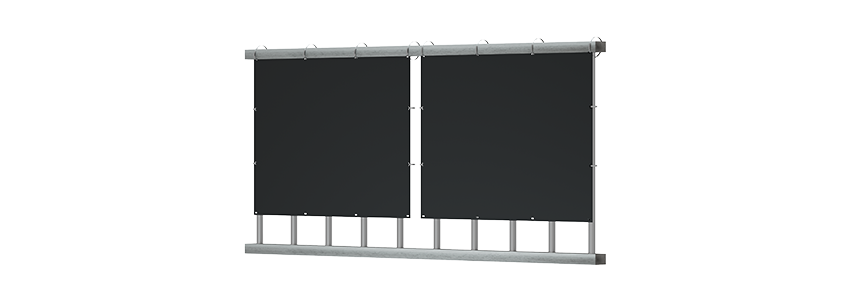

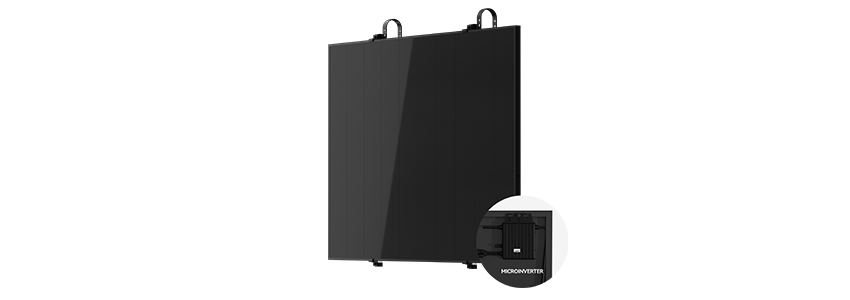
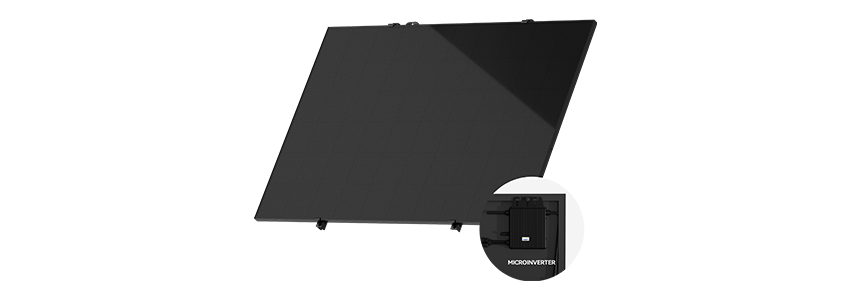
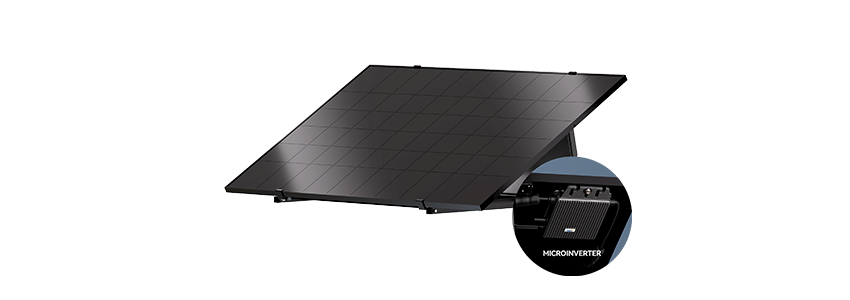
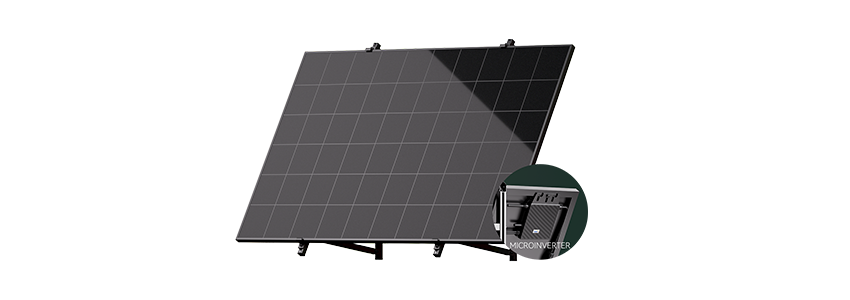

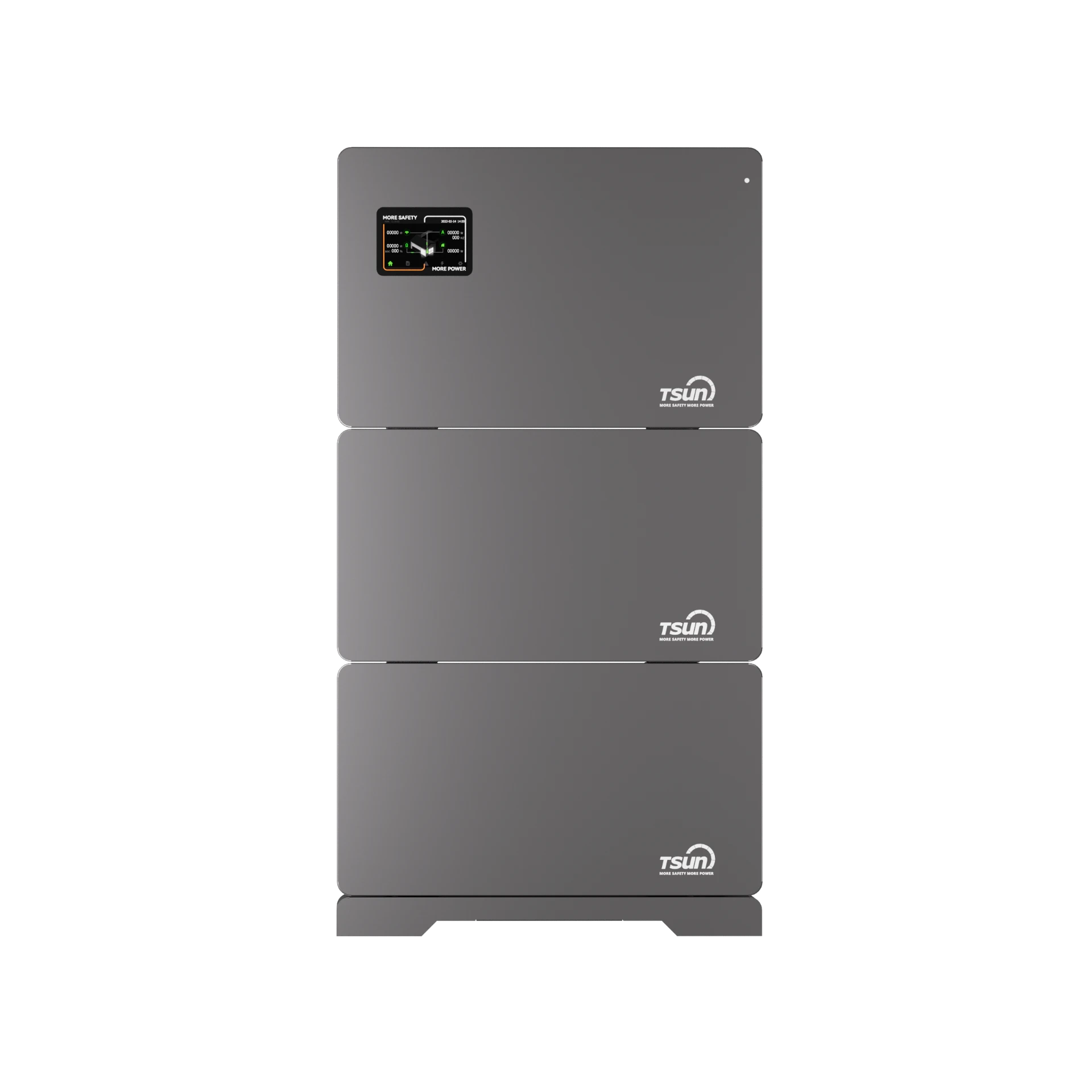
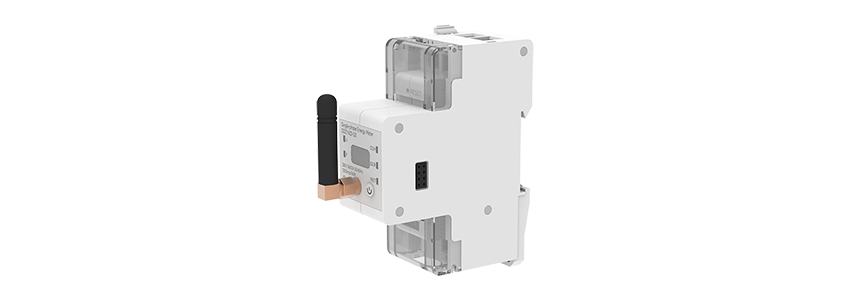
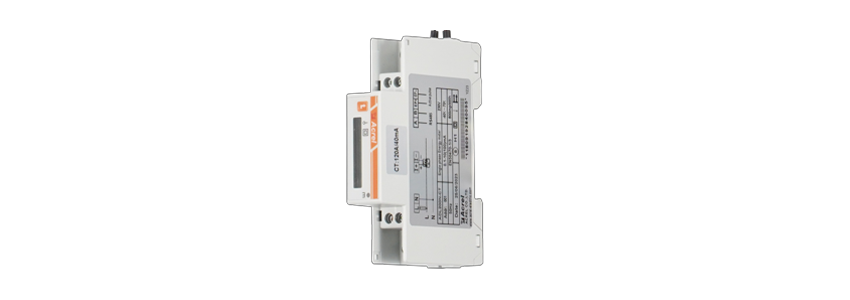
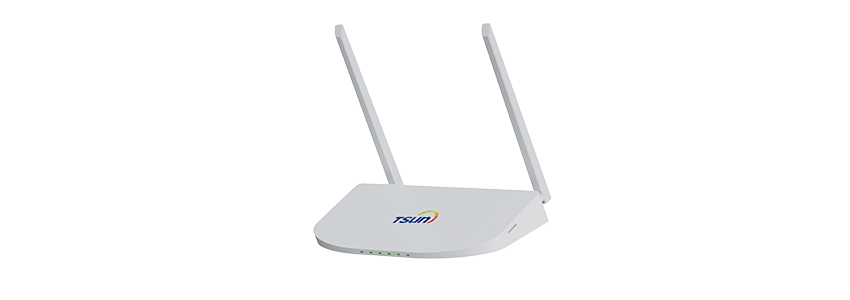

 LEARN DETAILS
LEARN DETAILS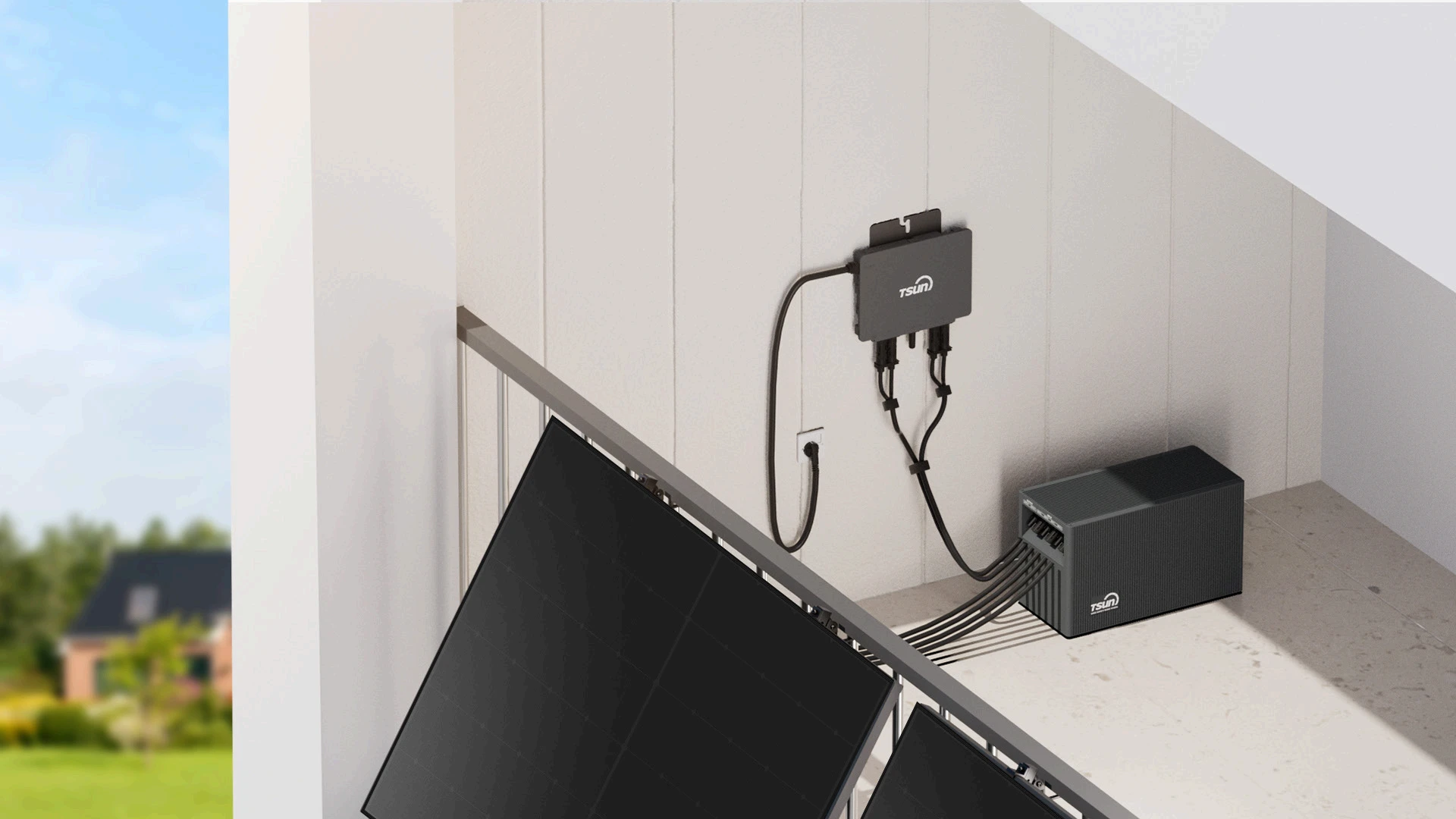
 LEARN DETAILS
LEARN DETAILS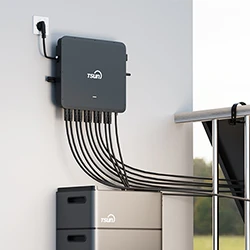
 LEARN DETAILS
LEARN DETAILS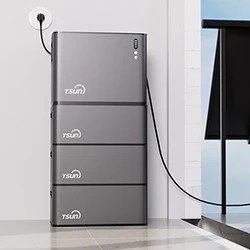
 LEARN DETAILS
LEARN DETAILS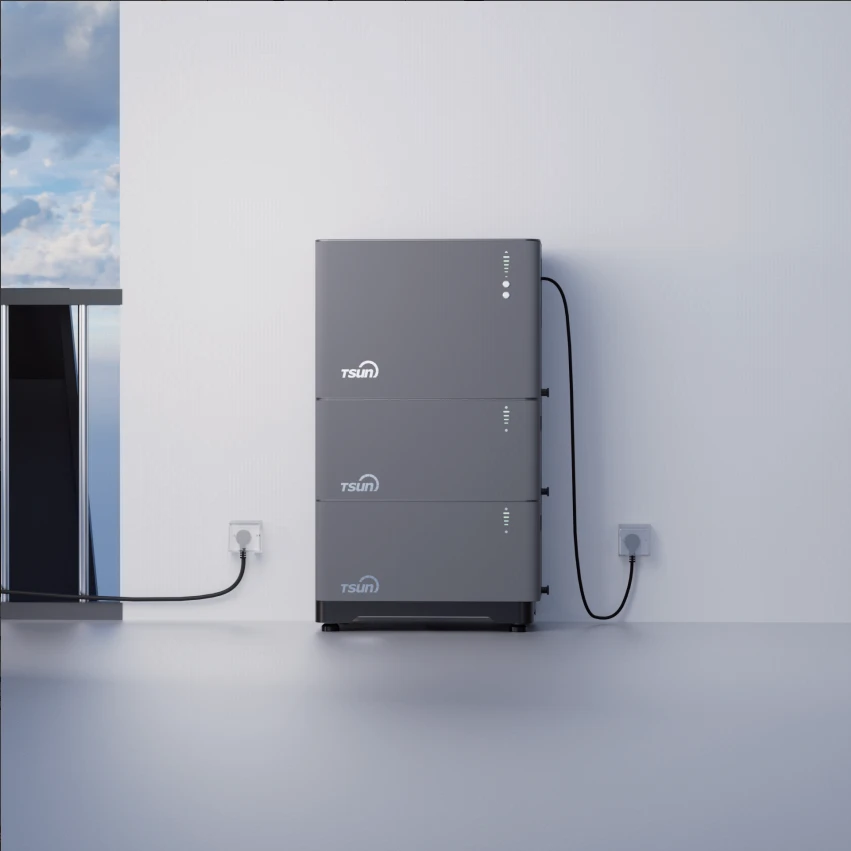
 LEARN DETAILS
LEARN DETAILS

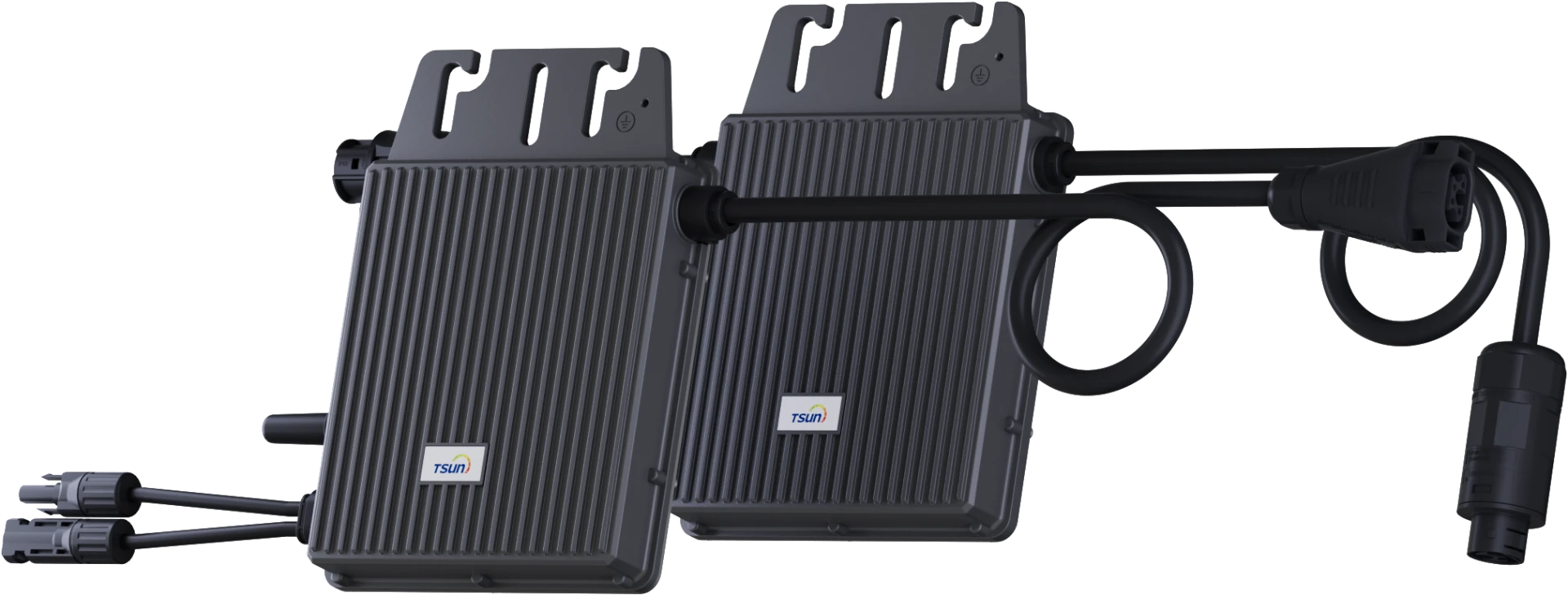
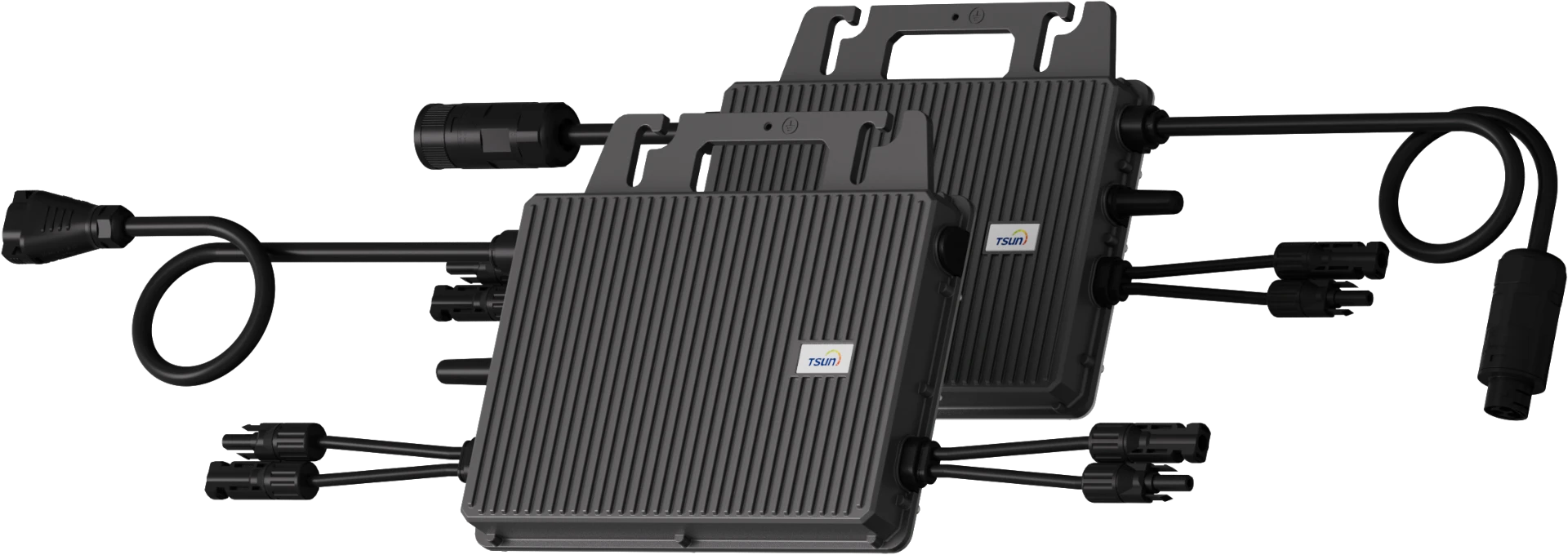
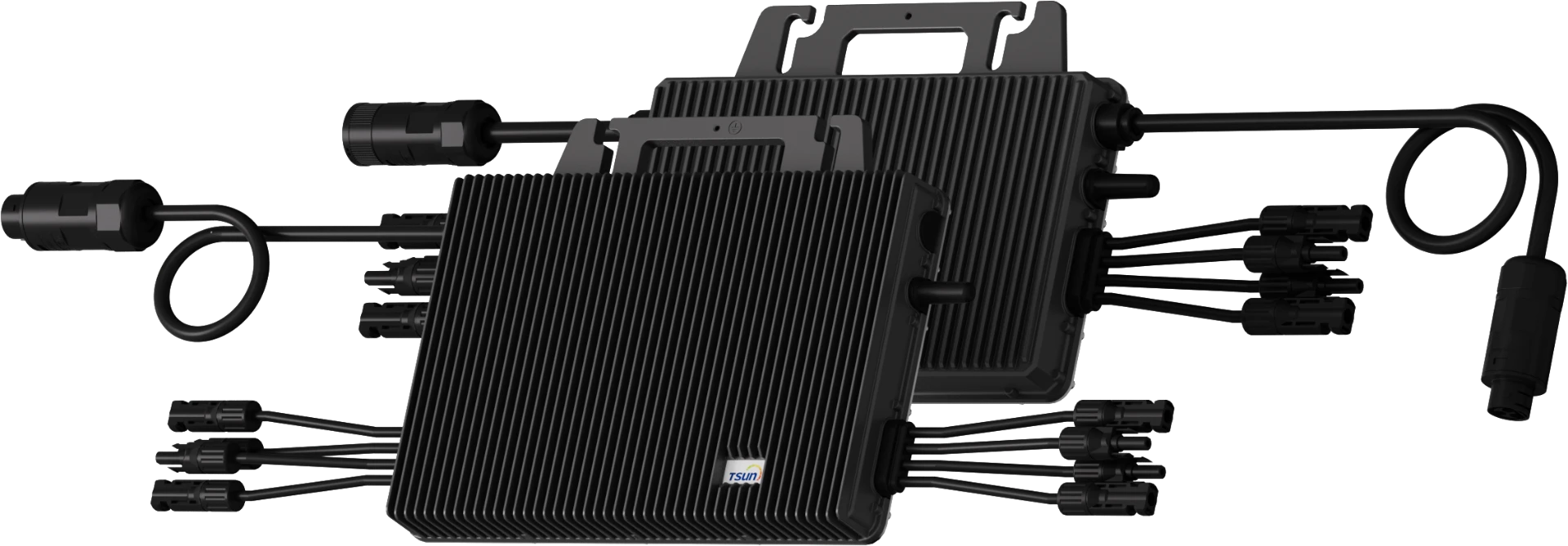
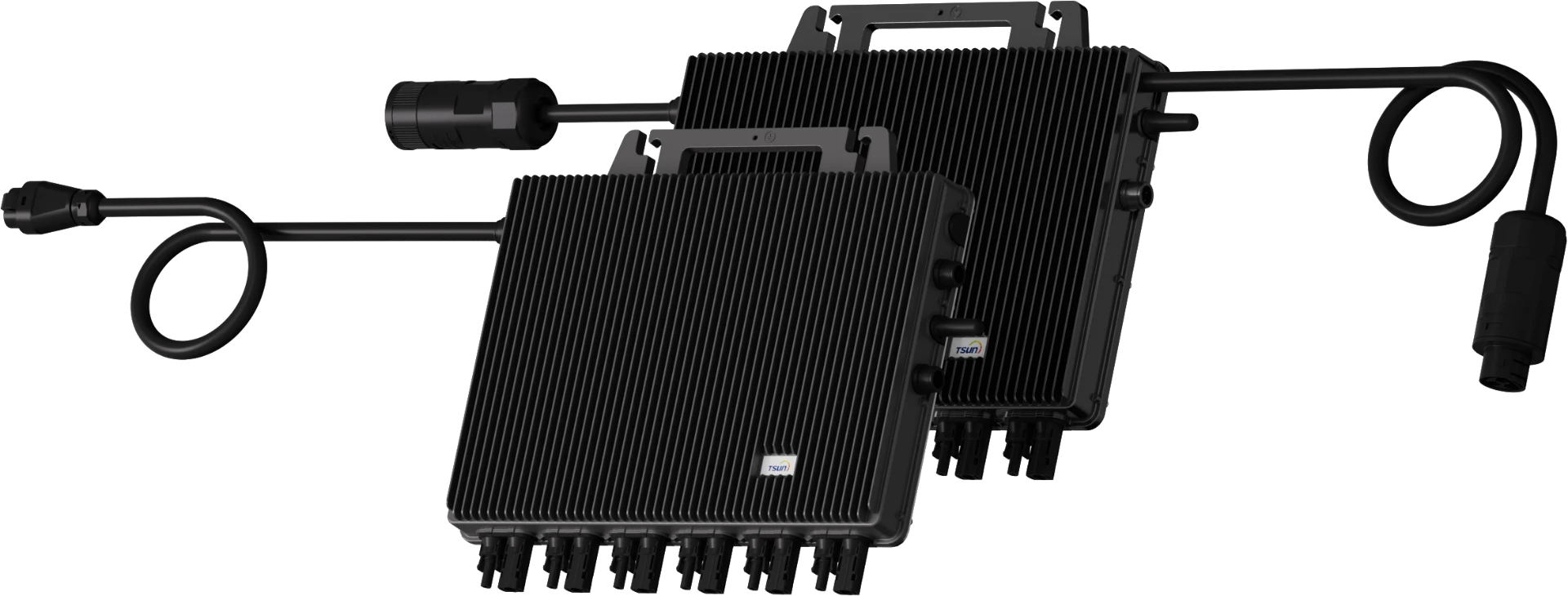
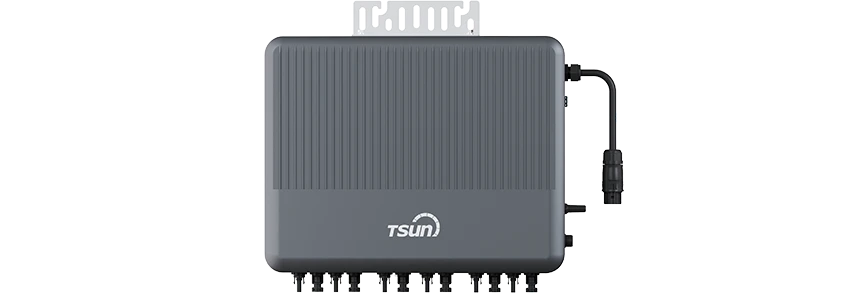
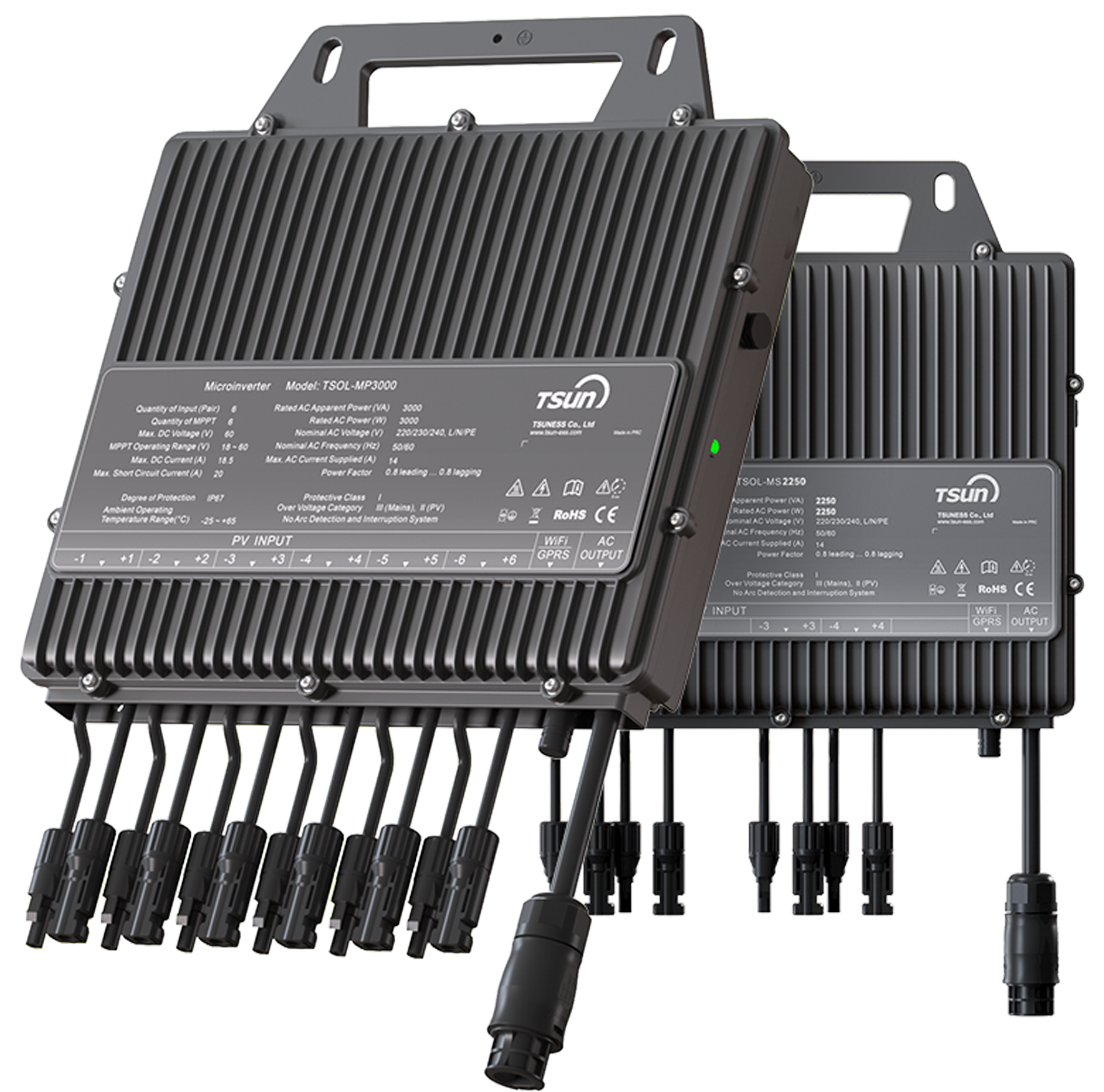
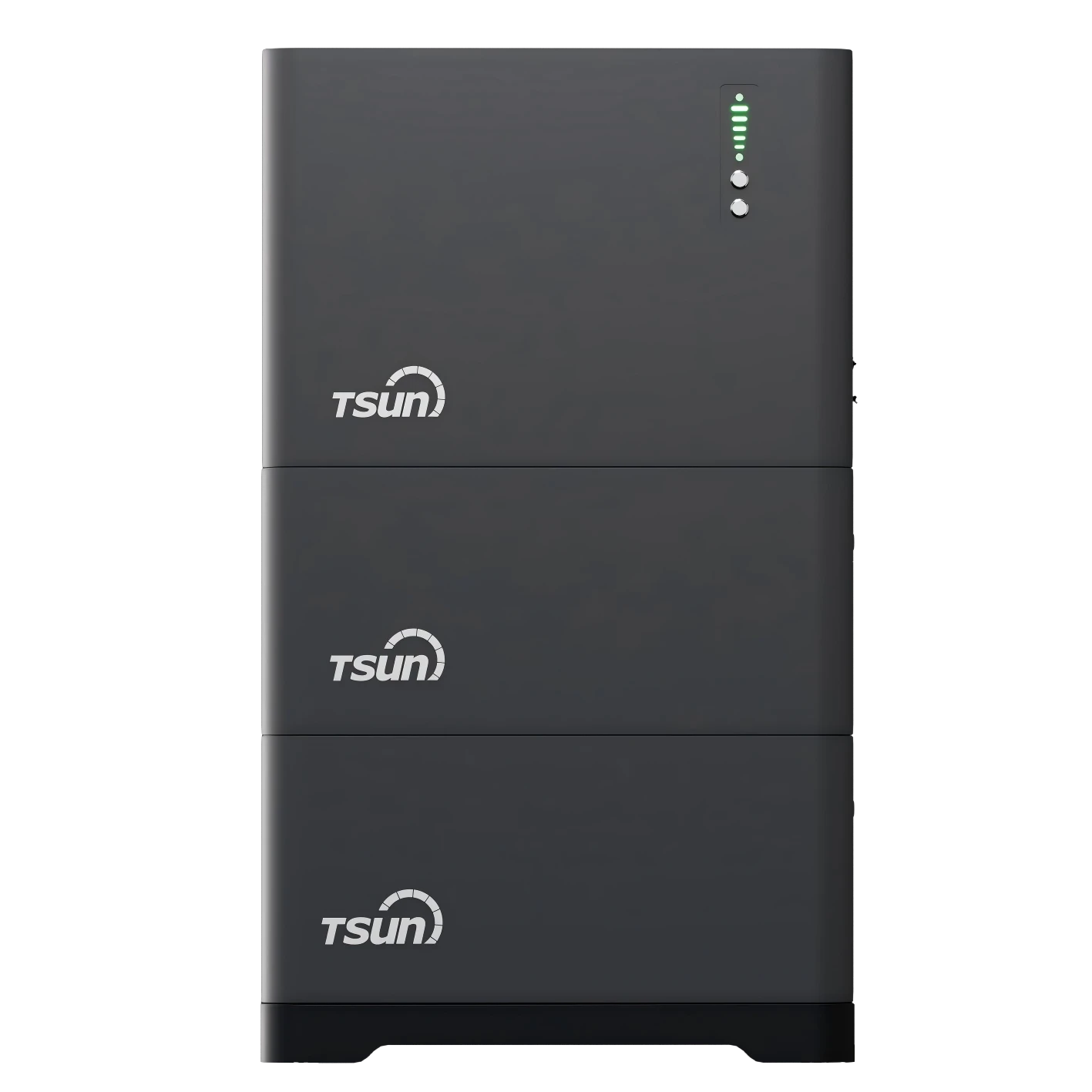
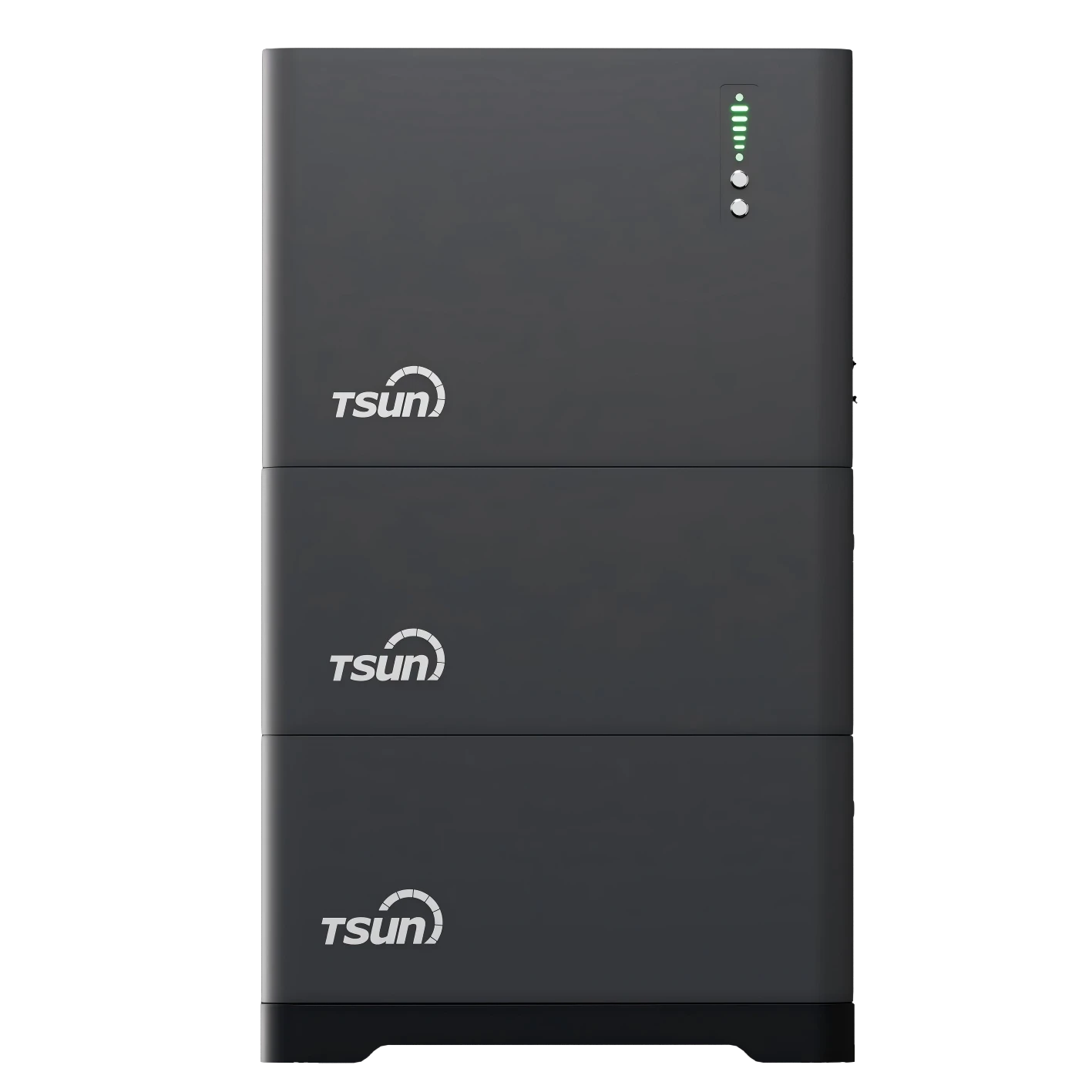
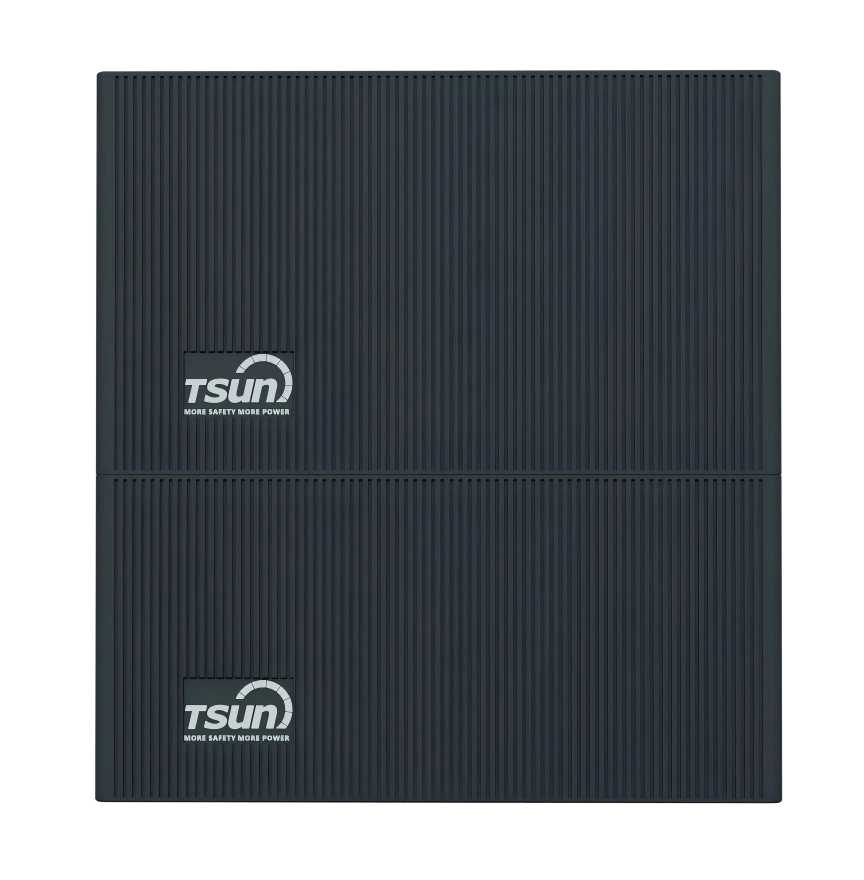
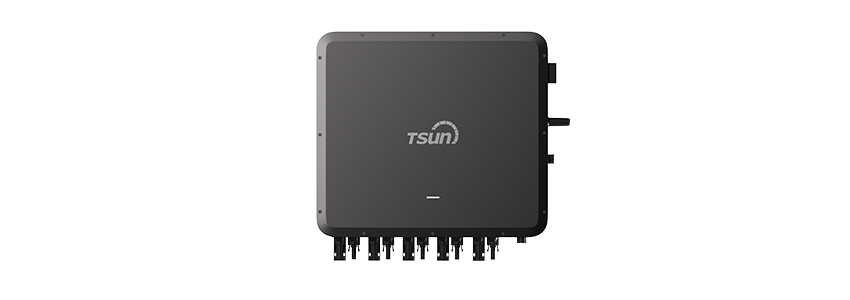
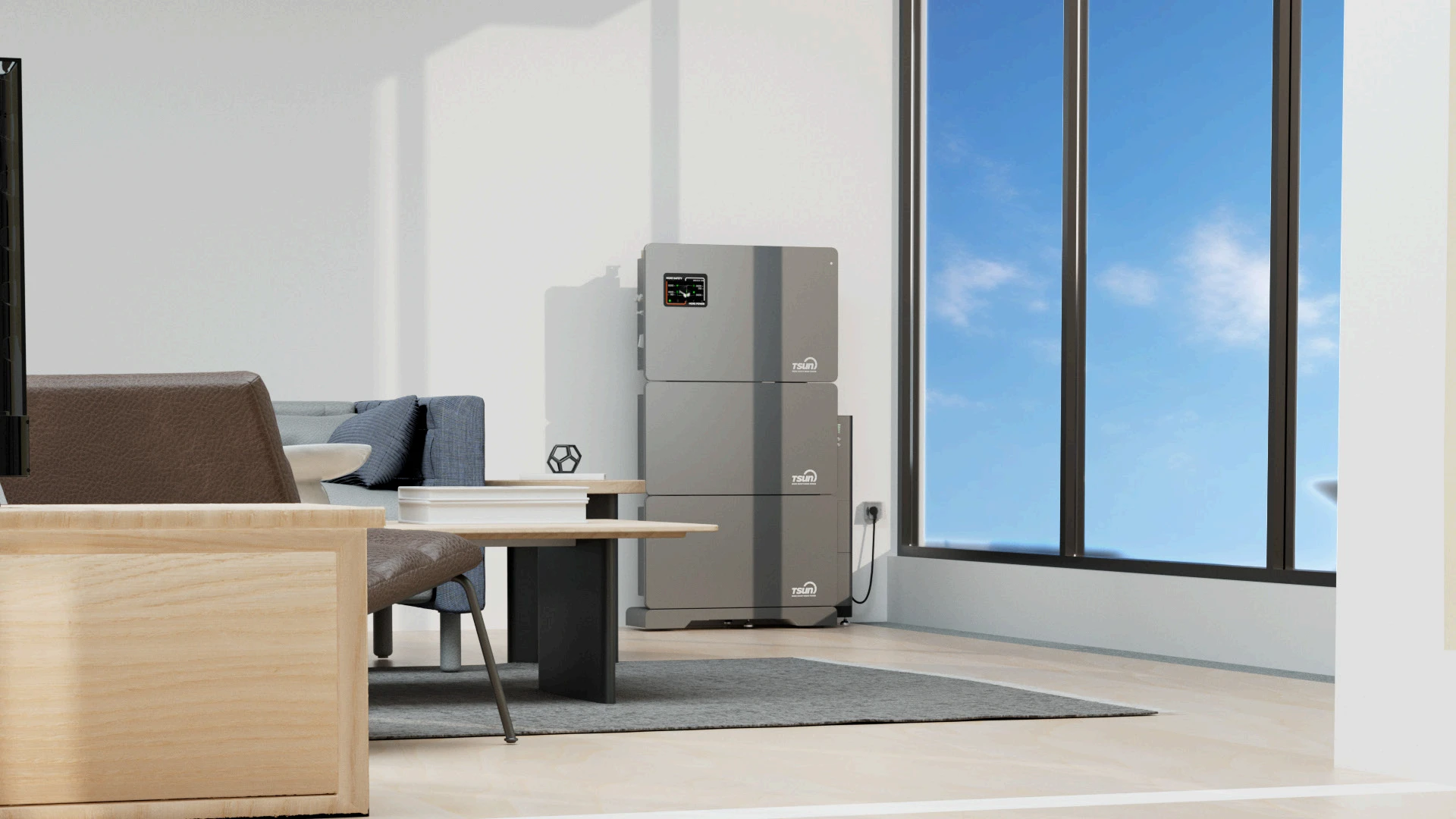
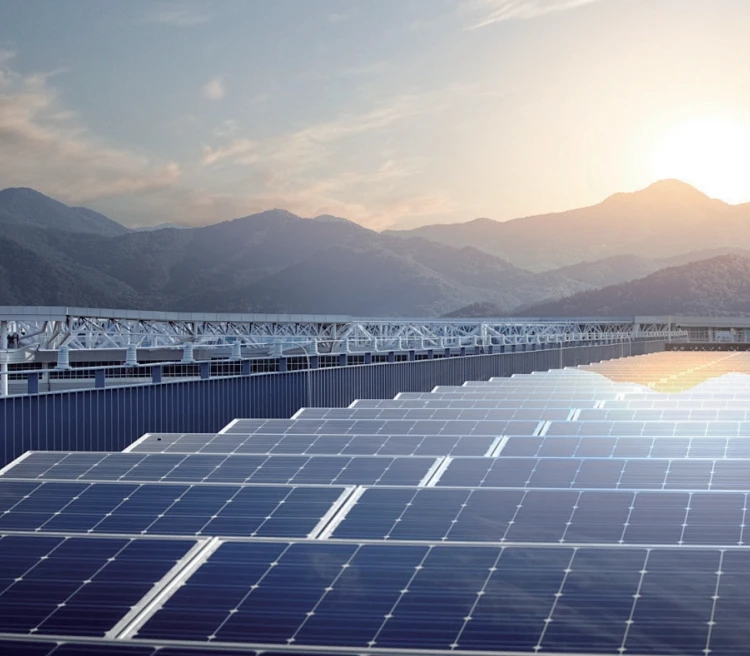
 Downloads
Downloads Video Center
Video Center Report Fault for Repair
Report Fault for Repair FAQS
FAQS Service Network
Service Network Privacy Policy
Privacy Policy Contact us
Contact us Monitoring
Monitoring










